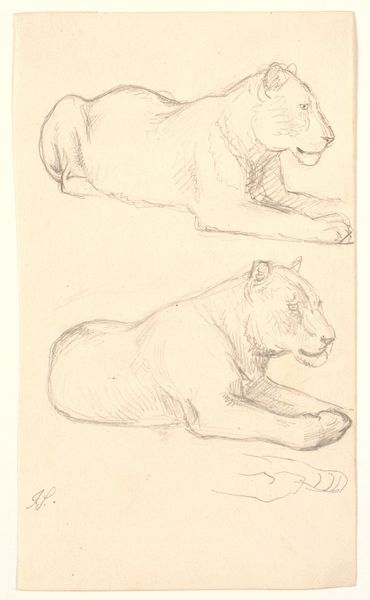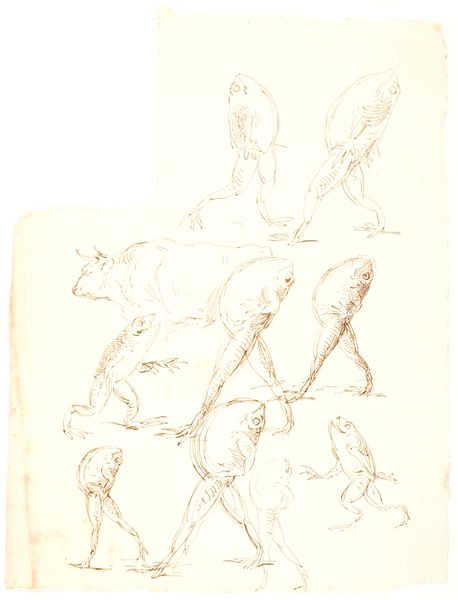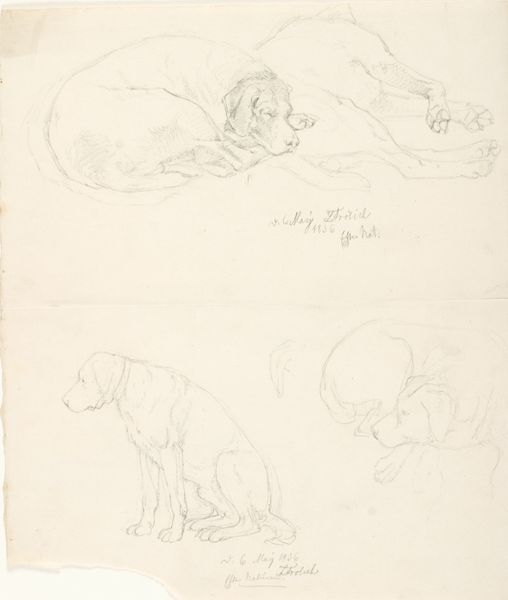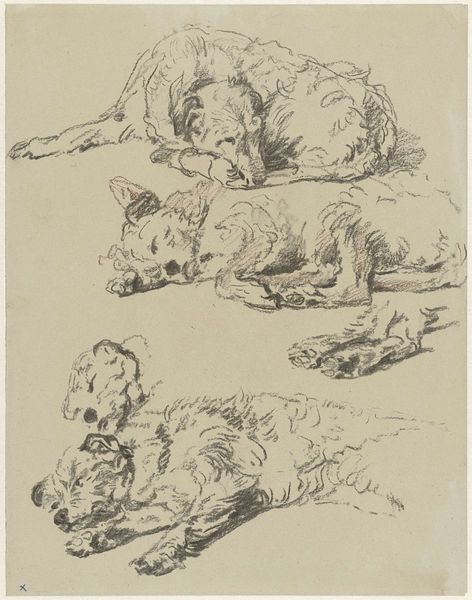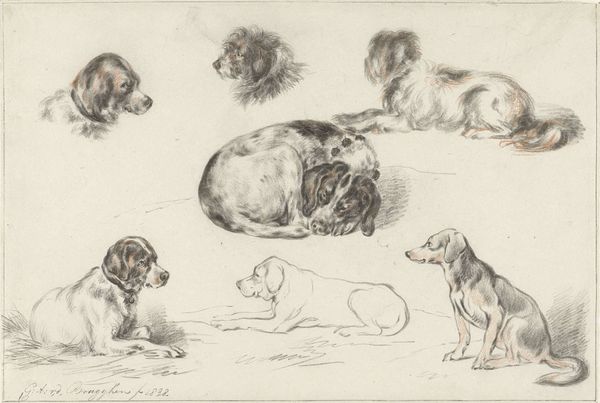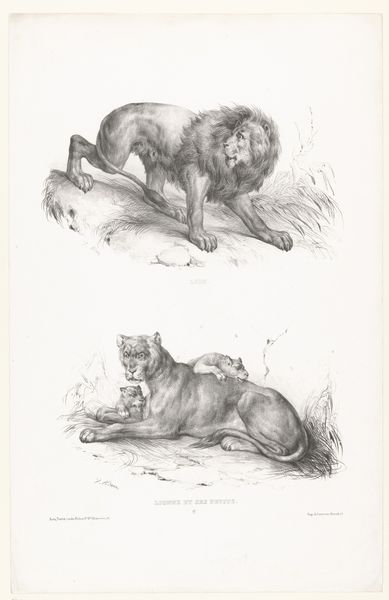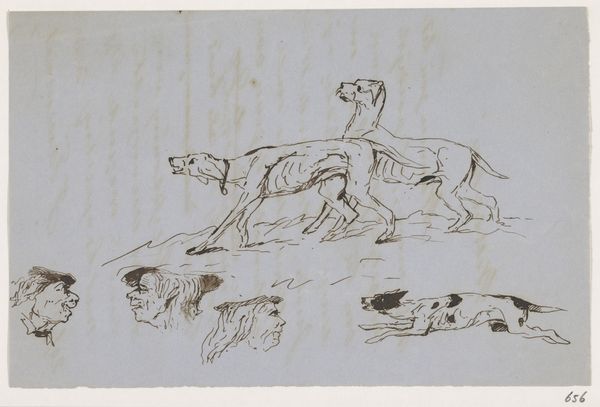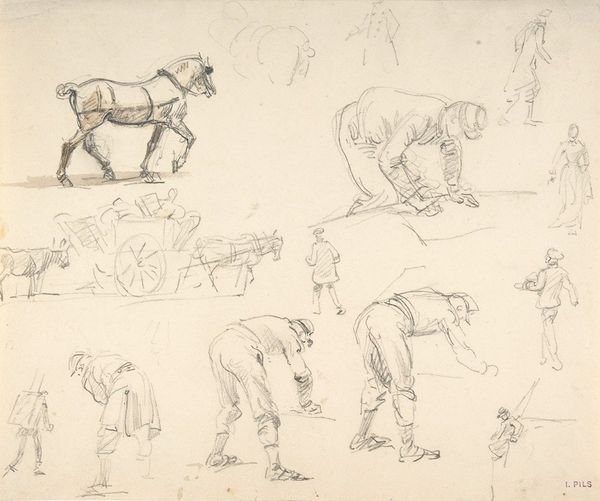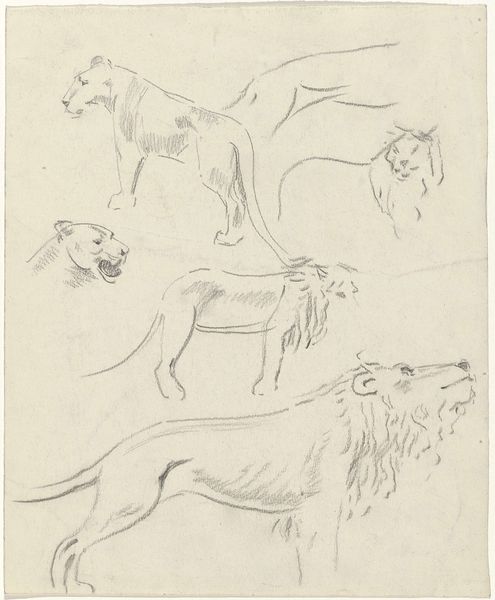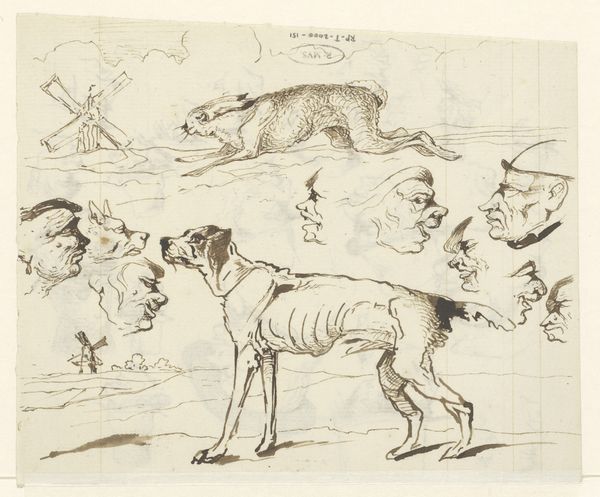
drawing
#
drawing
#
figuration
#
realism
Dimensions: 218 mm (height) x 178 mm (width) (bladmaal)
Curator: Here we have Lorenz Frølich's "Animal Studies," created in 1839. What are your initial impressions of this drawing? Editor: I’m struck by how this drawing highlights labor, actually. It feels like a record, perhaps, of the artist studying these animals to more faithfully produce something grander. And that tonal paper really speaks to its age; the materials immediately pull you back to its specific historical moment. Curator: Absolutely, and consider the cultural understanding of animals during that period. Frølich depicts both domesticated and wild animals here – cats, dogs, lions, even a swan – each holding different symbolic weight. Notice how the lion, traditionally a symbol of strength and royalty, is depicted in captivity, on a platform, attached to chains. Editor: That's a telling detail – the visible chains, the plain platform. The contrast between the animal's raw power and its subjugated status is palpable, presented here in sparse drawing without drama. How fascinating that even preliminary sketches like this one become indicators of their societal function. Curator: Precisely! Think about the historical implications; perhaps these animal studies were practice for illustrating Aesop's Fables, works that themselves project human societal ideals, flaws, and morality through anthropomorphic creatures. The lion, therefore, represents not just strength, but perhaps, morality. Editor: I agree; focusing on these preparatory material aspects lets me rethink it! The medium itself – a drawing – offers directness. You see every stroke, the labor of creation. The lack of dramatic finish emphasizes the mundane nature of observation and study—all these studies towards something else. Curator: So true, and the open, sketch-like quality invites the viewer into Frølich's creative process. We, in turn, are enacting the creative journey. "Animal Studies," as such, transcends being a simple sketch, becoming an exploration of art’s production as much as natural observation and the power of symbolism. Editor: Well said. Seeing the means by which this art was composed emphasizes how artistic labour transforms an idea into tangible form. I never imagined that a preparatory study such as this could provoke this sort of thinking.
Comments
No comments
Be the first to comment and join the conversation on the ultimate creative platform.
